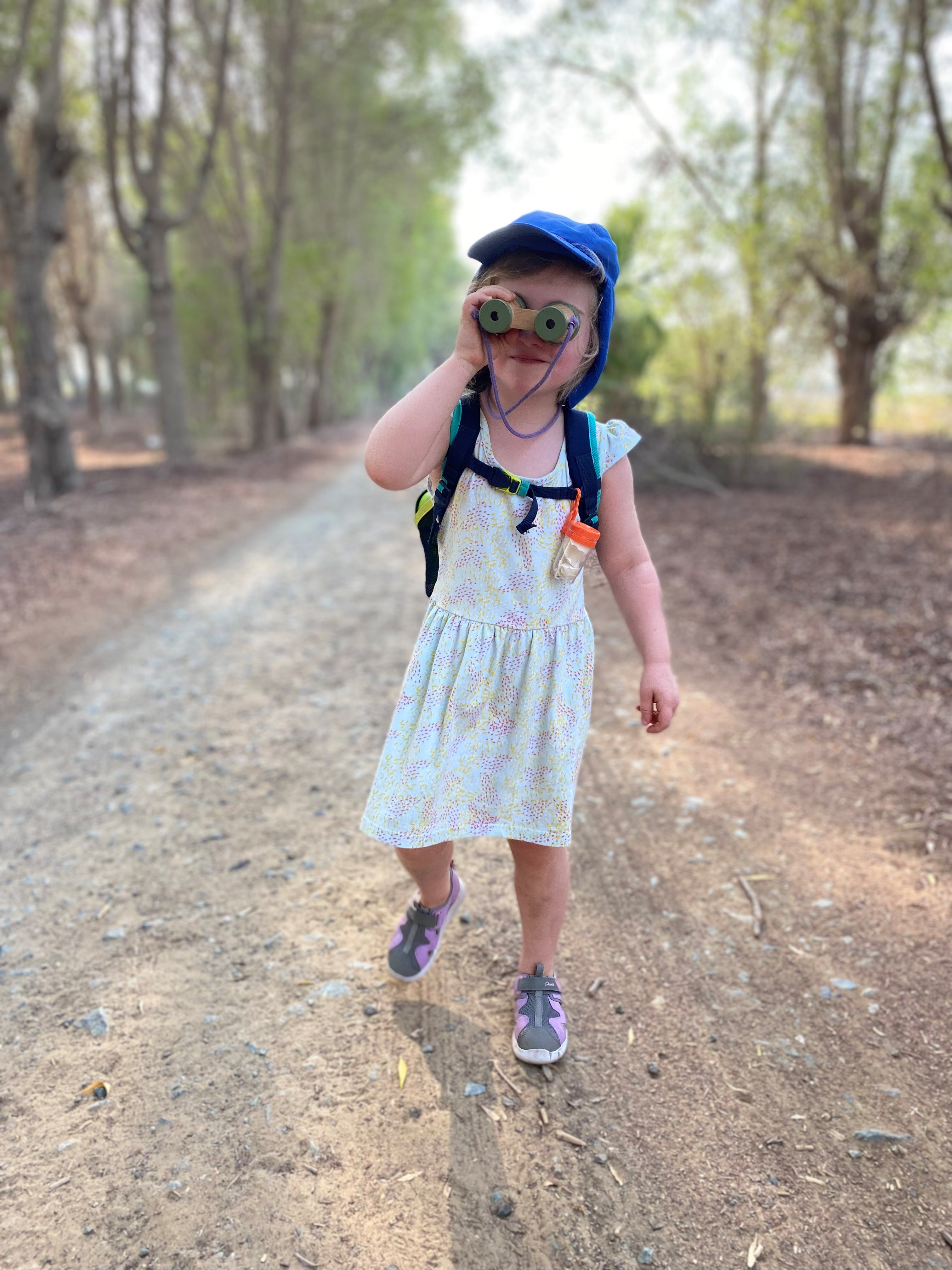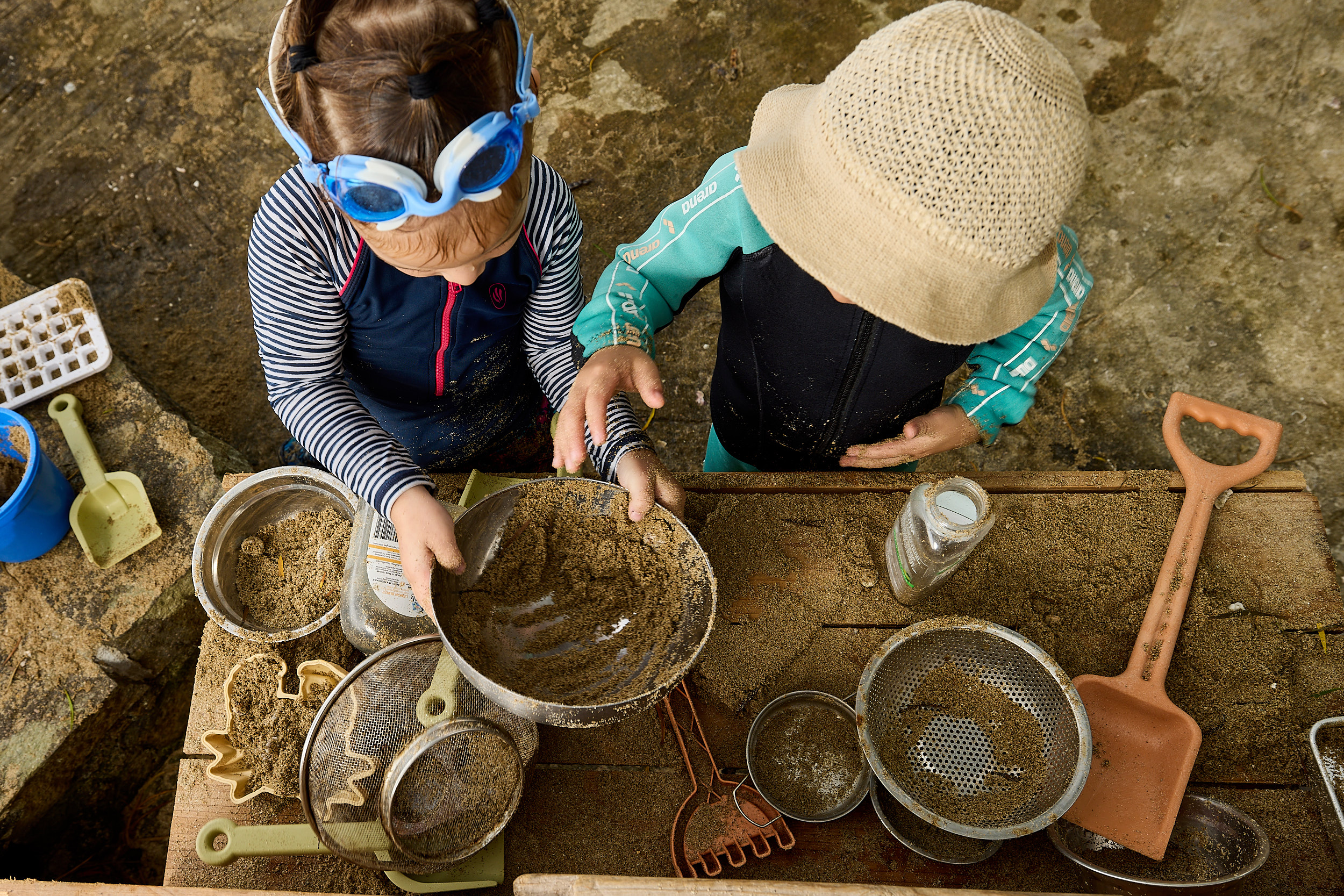Nature-based learning in schools and nurseries around the world is on the rise, as educators and parents increasingly recognise the importance of children spending time outdoors, connected with nature, and unplugged from technological devices.
What is nature-based learning?
Nature-based learning is an umbrella term combining early childhood education and environmental education, (Larimore, 2019). This eclectic mix exposes young children to extensive daily time spent outdoors in a natural environment, traditionally in a forest, woodland, or natural space with trees. It supports a play-based approach whereby learners are immersed in, learn about, and alongside nature. The time spent in nature varies with some children spending as much as 75-100% of their day outdoors only retreating to makeshift shelters and huts during adverse weather conditions. In contrast, others spend much less time immersed in nature.
The most common and well-known programme is the forest school approach, however, there are other programmes, such as beach schools, outdoor nurseries, nature-based pre-schools, bush kinder’s and enviro schools. Each programme has similar core beliefs and common threads but differs in their delivery as educators weave their programme into the curriculum, making adaptations to suit their individual environmental and cultural needs.
What’s all the hype?
The benefits of being in nature are endless as it emanates a natural calmness and supports a positive sense of well-being away from the busyness of modern life. Without the restraints of school routines and classroom walls, children are free to explore, discover, and connect with the natural environment, developing an awareness of eco-literacy and understanding why and how to respect our fragile planet.
Learning in nature provides authentic life experiences and stimulates curiosity, creativity, and interest along with a myriad of endless other possibilities to observe, question, and hypothesise, fostering all areas of child development and wellbeing. The natural environment engages children in physical challenges, such as climbing trees which develops and enhances their motor skills, muscle strength, balance, and coordination as children take calculated risks. Time in nature builds resilience and self-regulation skills as children collaborate and work in partnership to problem-solve and find solutions when faced with challenges, building strong social skills and teamwork.
Nature-based learning also has huge benefits for children with additional needs and those who struggle with the constraints of classroom rules and academic expectations.
Urban nature-based learning
In 2020, almost half the global population lived in cities. The United Nations estimates that two out of three people will be living in cities by 2050, almost 68 percent in 2070, (UN-Habitat, 2022), therefore, it is essential we connect urban-based children with the natural world, but how? Several international settings are working hard to find solutions, using ideas and experiences from different countries to create their nature-based learning programs.
An international school based in the city of Nairobi, Kenya, identified many of the children had not explored or been exposed to the country’s vast natural environment and instead spent much of their time within the concrete walls of the city. The school started taking two classes of their early years children to the local forest once a month. The children go on forest walks with a local forest ranger and have a variety of focused activities, such as tree identification, feeling different tree bark textures, observing birds, as well as play-based learning opportunities. The enthusiasm of the children and staff has escalated and now all the early years children visit the forest and so do their sister schools and parents!
Despite the scorching temperatures for part of the year in the United Arab Emirates, schools are beginning to think creatively and make the most of the cooler months by utilising their local environment and engaging children in forest school, beach school, and desert school programmes. These schools adapt their timetables and curriculum during the cooler months to incorporate valuable weekly sessions.
An international school group in the densely populated and tightly packed city of Hong Kong, China, also identified the need to expose their young city learners to nature. They have set up a very successful forest-beach school program utilising the beach and mangroves. Children engage in typical forest-beach school activities and can be seen creating various concoctions in their sand kitchen and paddling in the shallow water.
There are endless possibilities to connect urban-based children with nature, it just takes a bit of creativity and imagination! A city school in India desperately wanted to connect their children with nature, but with no accessible green space close by, the children decided they should create their forest! The school management took on the challenge and each child planted a sapling on a derelict piece of land next to the school. Everyone nurtures the forest garden and to the delight of everyone, various insects and birds have moved in.

Top Tips for setting up a nature-based learning programme in an urban setting
1. Something is better than nothing! Be creative!
2. Utilise whatever natural environment you have close to the school or nursery, such as a park, clump of trees, beach, mangroves, or desert.
3. Set up regular visits, once a week, once a month or a 6-8 week programme.
4. Create and teach safety rules and identify boundaries.
5. Provide child-led play opportunities whenever possible.
6. Provide open-ended nature-focused activities such as bird identification, rock art, den building, tree identification, nest building, bug hotel construction, shell collecting, sand art…
7. Point out and observe how the environment changes over time, such as, leaves changing on trees, seasons for certain types of insects, birds, flowers, seeds or fruit, cloud formations, tidal changes and water levels…
8. Explain the benefits of nature-based learning to parents.
9. Set up a program that is sustainable, manageable and complements the curriculum.
10. Enjoy!
References
Larimore, R. A. (2019) Pre-School Beyond Walls: Blending Early Childhood Education and Nature-Based Learning. NC: Gryphon House, Inc.
UN-Habitat. (2022) World Crisis Report: Envisaging the Future of Cities. Nairobi, Kenya: United Nations Settlements Programme.


